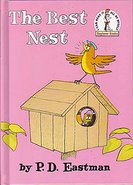Doc Leaf
Indian Tobacco
Kupa Kupa (New Zealand) I like this name!
There are two variants of Plantain – Broadleaf and Lance. The leaves of this herb are edible, and you can cook, steep, chew, crush, juice, and use it in salads. It is normally found growing in the rocky, poor soil alongside the dandelions. The great health and medicinal values of plantains are numerous. There is even a pill form called plantago mayor or Llanten. People who have allergic reactions to grass and weeds might want to avoid this -- get tested for this specific plant. Be SURE you are not using a plant that has been sprayed or affected by pesticides!
Plantain can be a wonderful solution for hikers and all nature lovers, who are highly susceptible to mosquito bites. This astringent nature of this herb enables it to extract the insect toxins from human body. Simply crush (or chew up) the leaves and place leaves on the bite as a poultice. This is helpful for bee stings, also. There is usually immediate relief.
It can also be used as a natural cure for rashes, acne, slivers, and glass splinters.
After applying the poultice, cover the area with a clean and soft cotton cloth and leave on four to twelve hours for the healing to take place.
You can easily incorporate these weeds in your DIY natural emergency kits to prepare insect repellent balms.
The uses continue! It is an effective ingredient in homemade skin wash.
Steeped like a tea, it can be applied as a natural solution for hemorrhoids.
The leaves and seeds of Plantain have a positive impact on the human digestive system. It has a soothing and healing effect, especially for those whose digestive system is affected by the prolonged use of anti-inflammatory, analgesic, or antibiotics drugs. Plantain is also beneficial for those who have Celiac disease or food allergies.
While leaves can be used in the form of tea or prepared into soup, seeds are either used in ground or soaked form. The ground seeds of this astonishing herb bulk up the absorbant fiber, mucilage. The plant is closely related to psyllium.
Consuming this before meals is known to aid in weight loss.
Plantain is a good source of silica and is a gentle natural expectorant. These properties make it an ideal natural formula for colds, coughs, and lung disorders. The natural diuretic properties of this herb transform it into a powerful solution for various kidney disorders. Plantain helps soothe menstruation by slowing down the blood flow. As a styptic, you can use it topically to ease the bleeding from wounds. It is also beneficial for healing various types of skin disorders.
From the digestive issues to the skin disorders, menstruation troubles to arthritis, plantain is a one-stop solution for various troubles affecting the humans. Include it in your diet as a salad leaf or chew it to quench your thirst. This versatile herb is worth learning about and incorporating into your life.
Sources:
– http://www.lifeadvancer.com/this-little-weed-is-one-of-the-most-useful-medicines-on-the-planet
– Project.Nsearch: Most Useful Medicines on the Planet
– Wikipedia: Plantago Major
– Prescription for Herbal Healing: 2nd Edition – Phyllis A. Balch, CNC
– Hygieia: A Woman’s Herbal – Jeannine Parvati
– Healing Secrets of the Native Americans – Porter Shimer
Other good references:
Back to Eden by Jethro Kloss
http://www.urbanoutdoorskills.com/cookingplantain.html
A side dish recipe:Wash leaves thoroughly. Younger leaves are less bitter.
Boil (?) for a minute. (NOTE! Many people stress that boiling it kills the nutrients)
Soak for 3-4 hours
Rinse 2-3 times; squeeze leaves a little to remove some of the bitter juice.
Mix with garlic, soy sauce and perilla oil
Stir fry
Soak them again for 3-4 hours
Put leaves back in the pan over medium heat for a few minutes stirring occasionally.
Let them cool down, mix with sesame oil and seeds.
Enjoy!
Another recipe and good detail:
http://www.urbanoutdoorskills.com/cookingplantain.html
There is really a sweet spot between 3 and 5 minutes of boiling. 3 minutes for young leaves (nice bright green) and 5 minutes for older leaves.
For simplicity's sake: You can boil both for 4 minutes.
Place in cold iced water and call it a day.
Some of the leaves can be a tad bitter after 4 minutes (nothing wrong with bitter) and it helps adding some salt to the water when boiling.
The "algae" characteristics makes it perfect for creating Asian-style dishes. The leaves won't taste like algae but you can add the right condiments and you could fool many people into thinking that they're actually eating algae.
Seasoning:
1 tablespoon sesame oil
1 tablespoon soy
1 garlic clove
and, in my case because I didn't have sesame seeds I used roasted white sage seeds and some of my California black walnuts.
Mix and let rest for 5 minutes. Super yum!









No comments:
Post a Comment